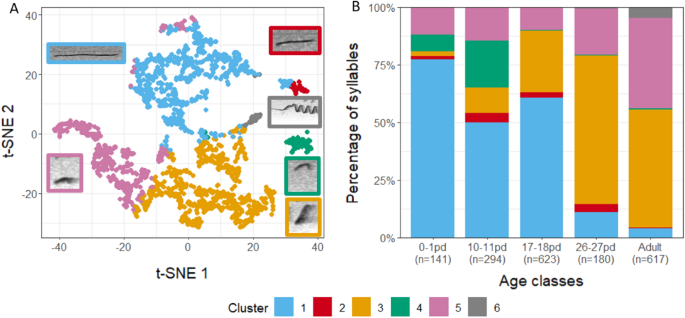Summary made by ChatGPT4
The scientific paper “Features of animal babbling in the vocal ontogeny of the gray mouse lemur (Microcebus murinus)” presents a fascinating exploration into the vocal development of gray mouse lemur infants, drawing parallels to human infant babbling. This study delves into the complexities of animal communication, particularly how these small primates develop their unique vocalizations from infancy to adulthood. The researchers meticulously analyzed the vocal patterns of these lemurs, examining how their calls change and mature over time.
The paper begins by laying the groundwork for understanding the concept of “babbling” in both human and animal contexts. It outlines the stages of human infant language development, from the early phonation stage to the more complex canonical babbling stage. This progression is crucial as it forms the basis for language acquisition, hinging significantly on auditory feedback and caregiver interactions.
In a similar vein, the study investigates the vocal development of gray mouse lemurs. These small primates, native to Madagascar, are an ideal model for such research due to their complex vocal repertoire and unique rearing practices. The researchers conducted a comprehensive analysis of the lemur infants’ vocalizations, tracking changes in their calls across different developmental stages. The study used innovative techniques like unsupervised cluster analysis to categorize various syllable types and examined the impact of age, context, and social interactions on these vocalizations.
One of the critical findings of this research is the identification of parallels between human infant babbling and lemur vocal development. The study reveals that gray mouse lemur infants exhibit several key features of babbling, such as rhythmic repetition and syllable variety. These characteristics are crucial for understanding the broader implications of vocal learning and development across species.
The paper’s discussion section offers insights into the significance of these findings, proposing that the observed vocal changes in lemur infants go beyond mere physical maturation of the vocal apparatus. Instead, they suggest a more complex interplay of factors, including social learning and auditory feedback, shaping these vocalizations. This perspective opens up new avenues for exploring vocal learning mechanisms in non-human primates and their parallels to human language development.
In conclusion, this paper contributes significantly to our understanding of animal communication, particularly in the context of vocal learning and development. Its findings not only illuminate the intricacies of lemur vocalizations but also provide a valuable comparative framework for studying language acquisition across different species.
AI Afterthoughts
The implications of this study are profound, suggesting a shared evolutionary trajectory in vocal learning across mammals. It raises intriguing questions about the origins of language and communication, hinting at a universal mechanism underlying vocal development. Imagine a future where we decode the language of various species, understanding their communications as we do our own. This research could pave the way for breakthroughs in bioacoustics, fostering deeper connections between humans and the animal kingdom, and unraveling the mysteries of our shared evolutionary heritage.


